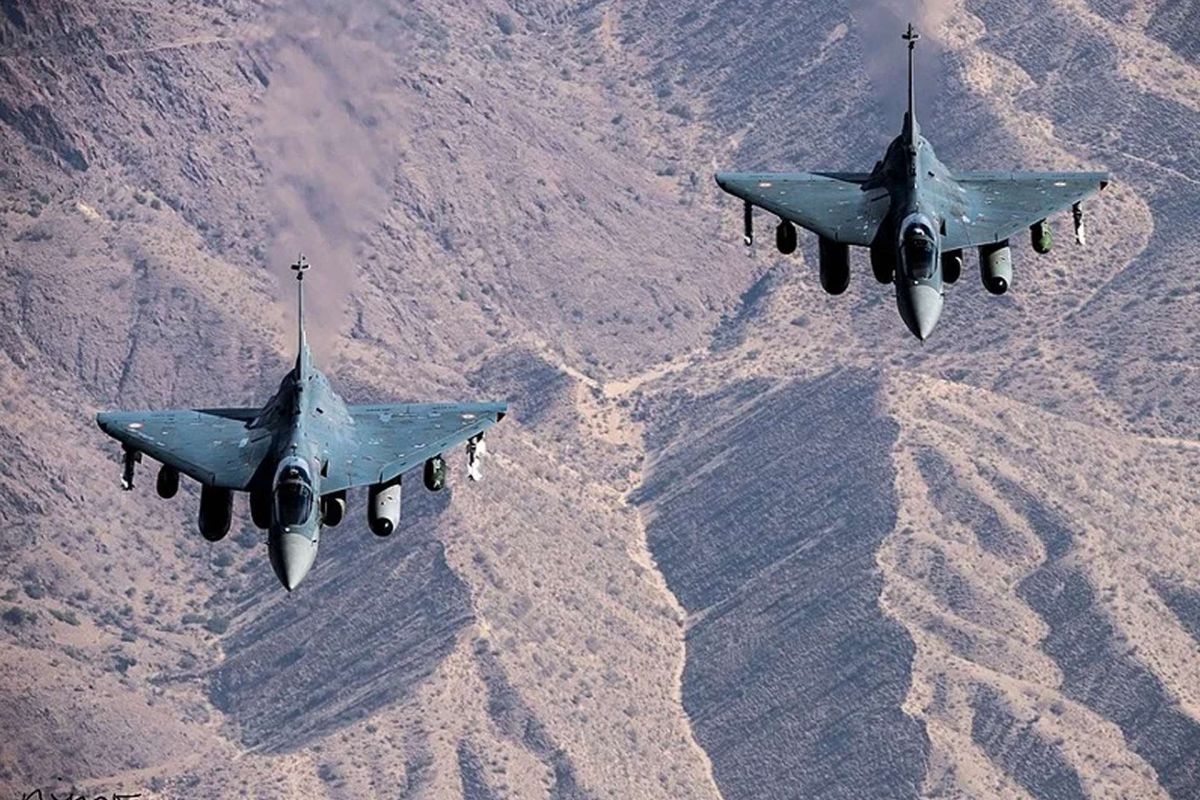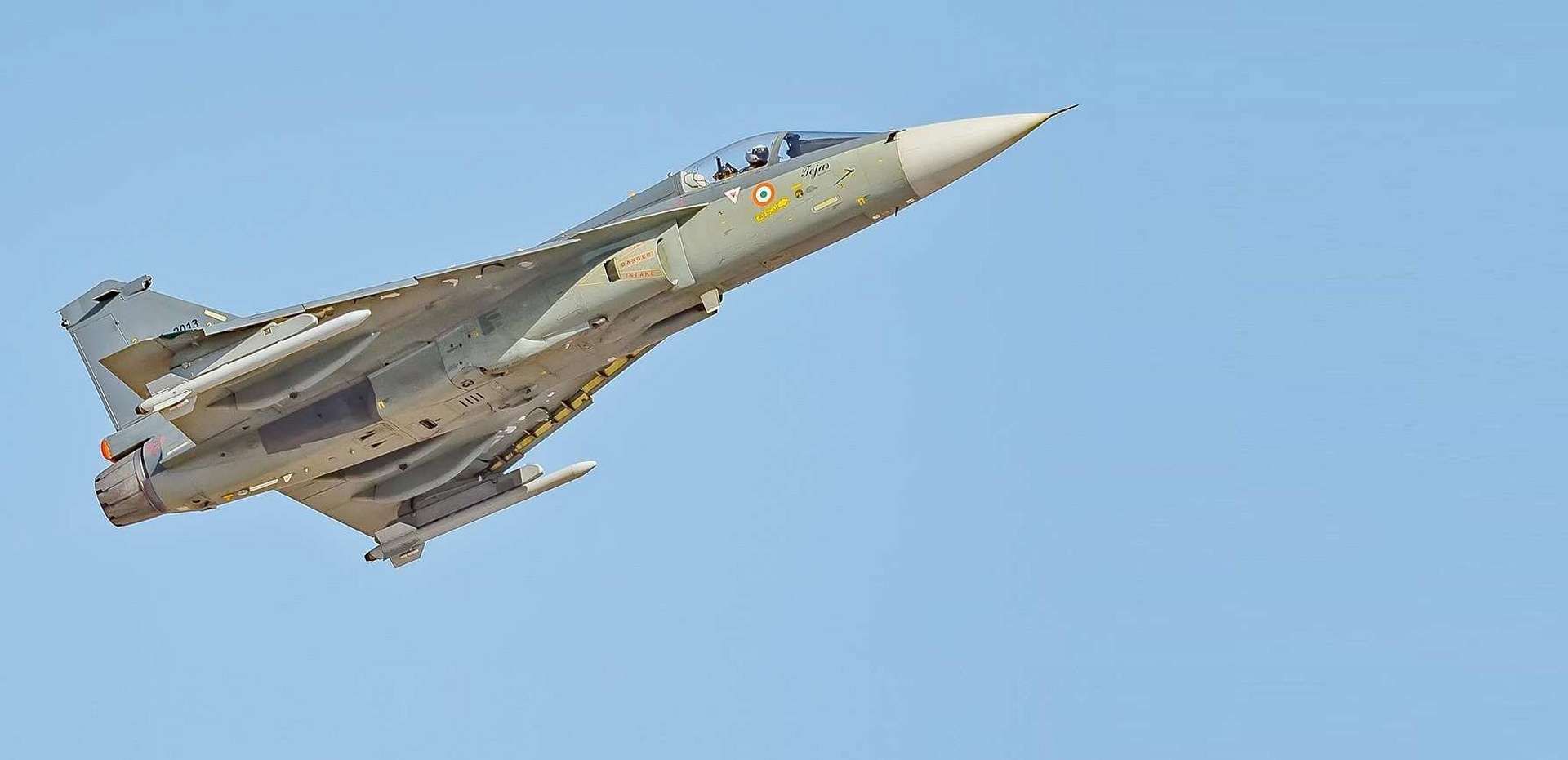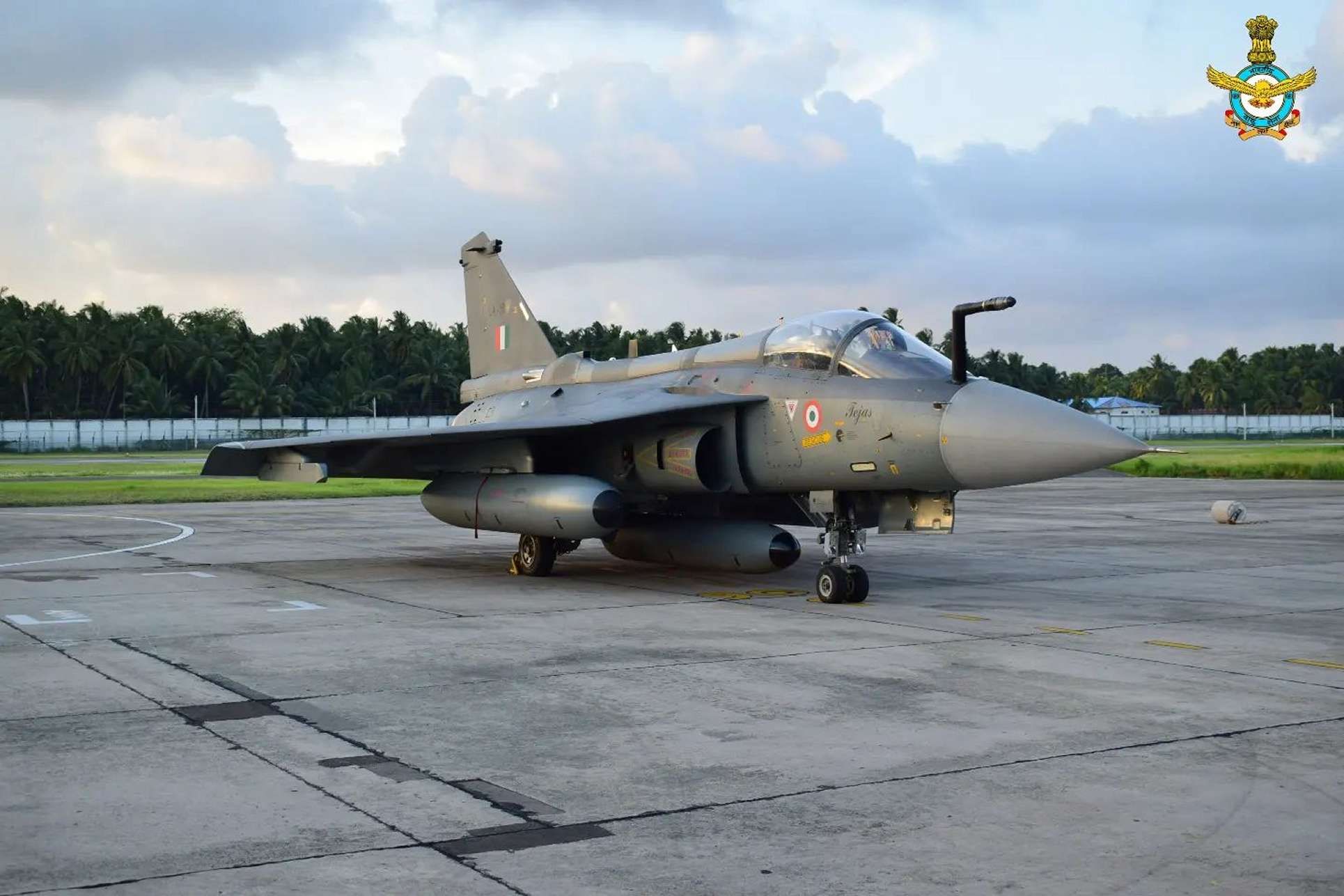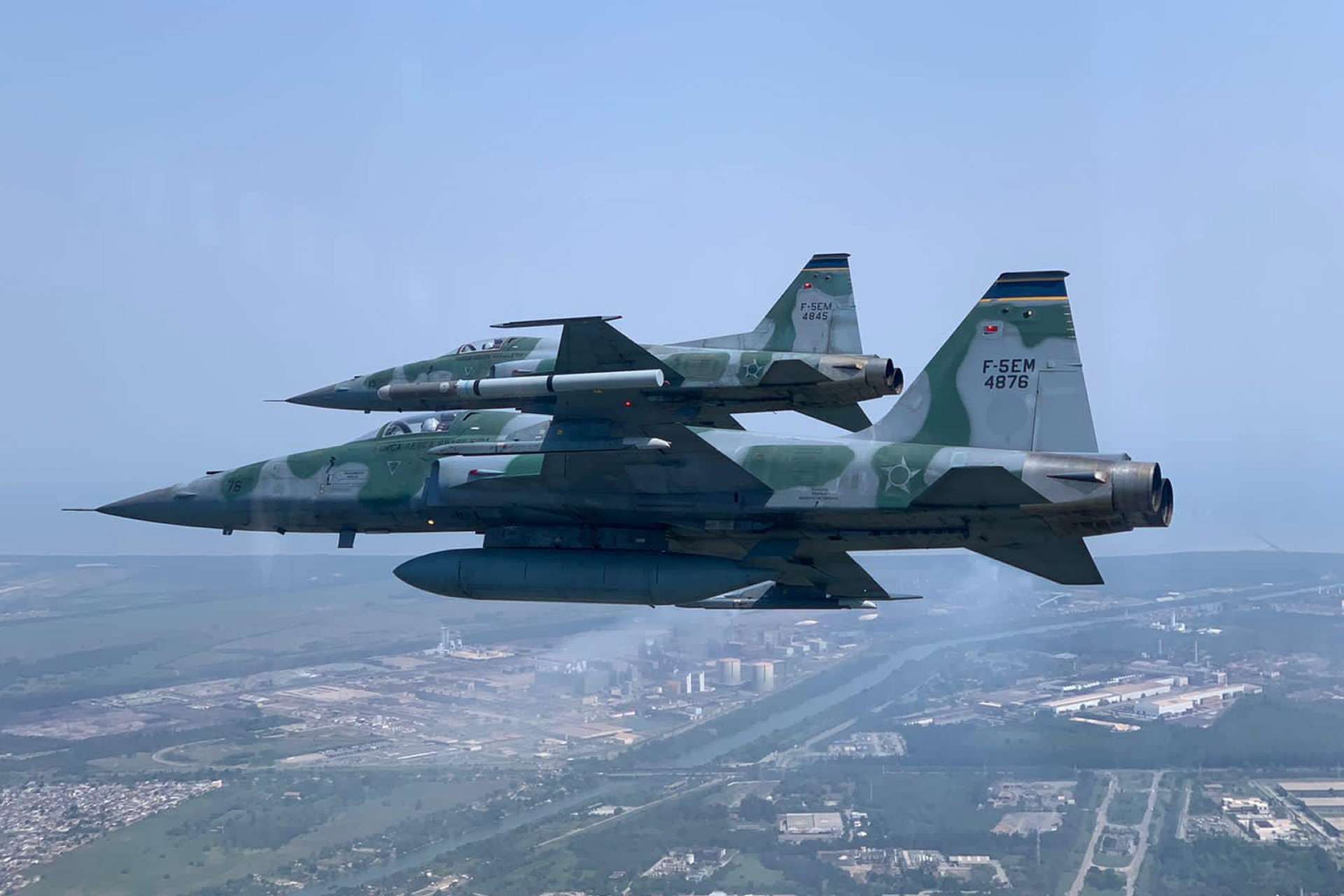Breaking News
Brazilian Air Force considers Indian Tejas fighters to replace American F-5s.
As reported by Times Now on September 11, 2024, Brazilian Air Force Commander, Lieutenant Brigadier Marcelo Kanitz Damasceno, met with Indian defense officials, including Air Chief Marshal V.R. Chaudhari and Chief of Army Staff General Upendra Dwivedi. The discussions covered various topics, including the possible procurement of India's indigenously developed Tejas Light Combat Aircraft, Brazil's Embraer C-390 Millennium medium transport aircraft, and opportunities for collaboration on helicopters, drones, and space satellites.
Follow Army Recognition on Google News at this link

The Tejas's first flight took place in 2001, and it was inducted into operational service in 2016, following several years of development and testing. (Picture source: HAL)
During these talks, Lieutenant Brigadier Marcelo Kanitz Damasceno confirmed that Brazil is considering the Tejas fighter aircraft as one option to replace its aging Northrop F-5 fleet, which is expected to be retired after 2030. Presently, the Brazilian Air Force operates the F-5 and the Gripen-E fighter jets. Damasceno mentioned that, in line with Brazilian regulations, the air force intends to maintain a fleet of no fewer than two and no more than three types of fighter aircraft. As the F-5 is phased out, the Tejas could potentially serve as the second or third aircraft type alongside the Gripen-E. He stated, "We will need maybe two more kinds as the F-5 goes. So, while the Gripen remains, the Tejas is one of the options for our second or third fighter plane."
The Tejas aircraft, part of India's Light Combat Aircraft (LCA) program, was initiated in the early 1980s to develop a new fighter jet to replace the Indian Air Force's aging fleet of MiG-21s. The project officially began in 1984 when the Indian government set up the Aeronautical Development Agency (ADA) under the Defence Research and Development Organisation (DRDO) to manage the development, with Hindustan Aeronautics Limited (HAL) serving as the primary contractor. The program faced multiple technological challenges, including the development of a digital fly-by-wire flight control system and an indigenous multi-mode radar. The Tejas's first flight took place in 2001, and it was inducted into operational service in 2016, following several years of development and testing.

The Tejas, part of India's Light Combat Aircraft (LCA) program, was initiated in the early 1980s to develop a new fighter jet to replace the Indian Air Force's aging fleet of MiG-21s. (Picture source: HAL)
The Tejas has several variants, each with distinct capabilities. The Tejas Mk1, the initial production model, features a GE F404-IN20 engine, a mechanically scanned radar, and a basic electronic warfare (EW) suite. The improved Tejas Mk1A, approved for acquisition in 2021, includes an active electronically scanned array (AESA) radar, an advanced EW suite, and other enhancements, such as a self-protection jammer and an onboard oxygen-generating system (OBOGS).
The Tejas Mk2, planned for future production, is expected to have a more powerful GE F414-INS6 engine, a larger airframe, and enhanced avionics, allowing it to carry more advanced weaponry and achieve better performance. Additionally, there is a naval version of the Tejas designed for operations from aircraft carriers, equipped with a reinforced structure and specialized features like arrestor hooks and leading-edge vortex controllers (LEVCONs).
The Tejas is a single-engine, multi-role fighter aircraft with a delta-wing design powered by the GE F404-GE-IN20 engine in its Mk1 variant and has a maximum speed of Mach 1.8 for the Mk1A. The aircraft includes nine external hardpoints to carry a range of weapons and equipment, such as air-to-air missiles (Astra, ASRAAM), air-to-surface missiles (BrahMos, Kristal), and various bombs, including laser-guided munitions. The Tejas Mk1A is equipped with the Elta EL/M-2032 multimode radar, contributing to its capabilities in different combat scenarios, including air defense, interception, ground attack, and anti-ship operations.

The Tejas has nine external hardpoints to carry a range of weapons and equipment, such as air-to-air missiles (Astra, ASRAAM), air-to-surface missiles (BrahMos, Kristal), and various bombs, including laser-guided munitions. (Picture source: Indian Air Force)
The discussions also focused on Brazil's interest in helicopters, with the Brazilian Air Force looking to add up to 24 new helicopters to its existing fleet of seven squadrons, each consisting of 12 helicopters. The new helicopters are intended to enhance operational capabilities, including in the Amazon region and for flood relief missions. Indian helicopters, such as the Dhruv and Prachand, manufactured by HAL, are among the options being considered.
In addition to the interest in the Tejas fighter and helicopters, the Brazilian side presented the Embraer C-390 Millennium medium transport aircraft as a potential alternative to the American C-130. Damasceno noted that the C-390 has been in service for five years and has accumulated 15,000 flight hours, with a reported serviceability rate of over 97 percent. According to Damasceno, the C-390 is faster and can carry a load comparable to that of the C-130. To align with India’s "Make in India" policy, Embraer has signed two memorandums of understanding (MoUs) with the Indian company Mahindra to explore possibilities for manufacturing the C-390 in India for both domestic use and export.

The F-5EM is a modernized version of the Northrop F-5 fighter jet used by the Brazilian Air Force, with updated avionics, radar, and weapons systems. (Picture source: Força Aérea Brasileira)


























